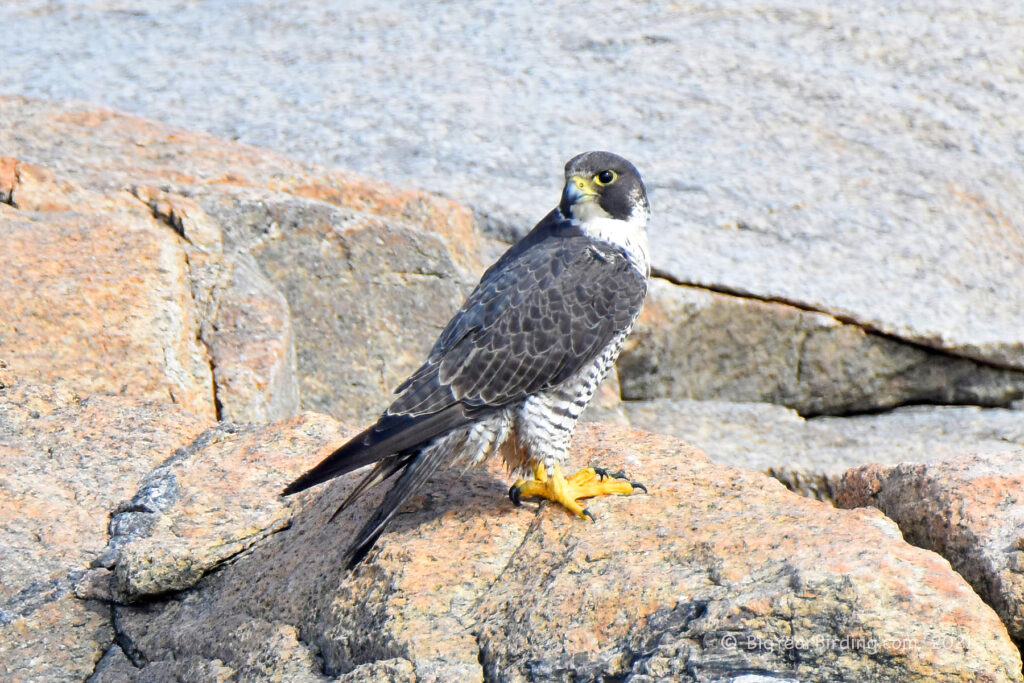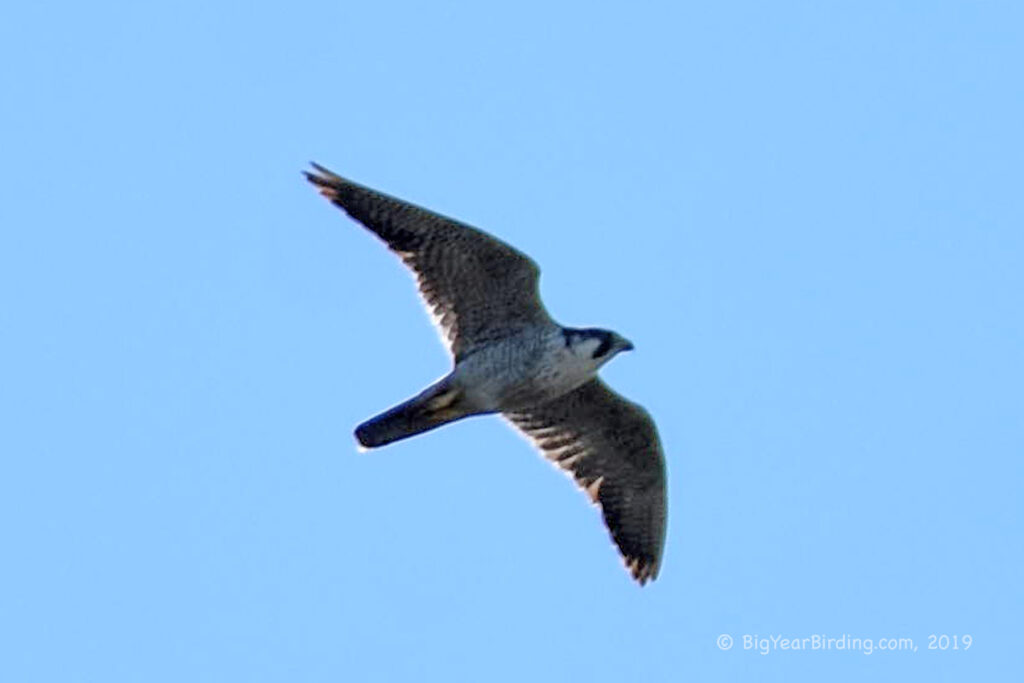
The Peregrine Falcon, also known as the duck hawk, is a powerful bird of prey that inhabits a wide range of habitats across the world. The average length of an adult Peregrine Falcon is 15 to 21 inches, with a wingspan of 40 to 47 inches. They typically weigh between 1.1 to 3.3 pounds, with females being larger and heavier than males. They have a streamlined body with long pointed wings, and their back and wings are usually blue-gray, while their belly is off-white with black spots.

One of the distinguishing field marks of the Peregrine Falcon is its distinctive black “mustache” markings on its face. They also have dark feathers on their head that form a “helmet” shape, which gives them a fierce look. Their eyes are large and round, and they have a sharp, hooked beak that they use to catch and kill their prey. Peregrine Falcons are known for their incredible speed and agility, with the ability to reach speeds of up to 240 miles per hour when diving to catch prey.
Peregrine Falcons are found throughout the world, and their migration patterns vary depending on their location. In North America, they breed in the Arctic and migrate south to Central and South America during the winter months. In Europe and Asia, they breed in the northern regions and migrate south to Africa, the Middle East, and Southeast Asia. Some Peregrine Falcons are also known to migrate along the coastlines of continents, following the seasonal movement of their prey.
Peregrine Falcons are known for their incredible hunting abilities and are one of the most efficient hunters in the bird world. They primarily feed on birds, such as pigeons, ducks, and shorebirds, but will also eat small mammals, such as rodents and bats. They use their speed and agility to catch their prey in mid-air, and their sharp talons and beak to kill it quickly. Peregrine Falcons are also known for their territorial behavior and will fiercely defend their breeding and hunting areas.

In the 20th century, the Peregrine Falcon was almost driven to extinction due to the use of pesticides, which caused their eggshells to become thin and fragile. However, due to conservation efforts and the banning of harmful pesticides, their populations have since recovered. The Peregrine Falcon is now considered a species of least concern by the International Union for Conservation of Nature (IUCN) and is a symbol of successful conservation efforts.

